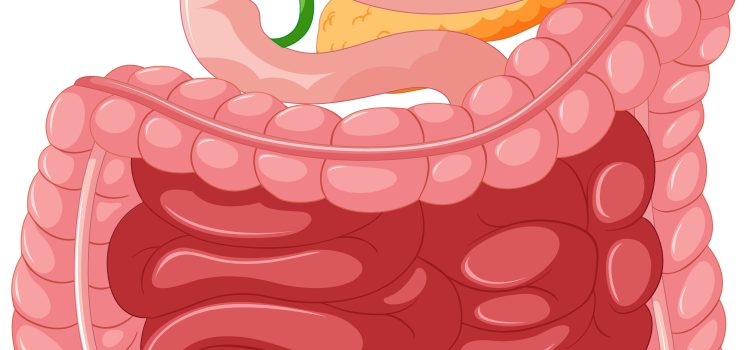Have you ever stayed up too late binge-watching your favorite TV show, only to feel the effects of sleep deprivation the next day? Or maybe you’ve pulled an all-nighter to cram for an exam and felt like a zombie during class. Whatever the reason may be, millions of people are suffering from sleep deprivation every day. And while it may seem like just a minor inconvenience, it can have serious consequences on both your physical and mental health. In fact, some experts refer to it as the “silent killer.” So let’s dive in and explore the dangers of sleep deprivation and what we can do to get a good night’s rest.
What is sleep deprivation?
Sleep deprivation is a condition where an individual doesn’t get enough sleep or quality of sleep required for their body to function properly. Most adults need around 7-9 hours of sleep per night to feel well-rested and alert during the day, but this can vary from person to person.
There are many different causes of sleep deprivation, including stress, caffeine consumption, medical conditions such as insomnia or sleep apnea, medication side effects, and lifestyle factors like working long hours or irregular shift patterns.
Lack of adequate rest can lead to a range of negative symptoms that affect both physical and cognitive performance. These may include fatigue, drowsiness during the day, difficulty concentrating on tasks at hand, irritability and mood swings.
Moreover, chronic lack of good quality sleep has been linked with serious health issues such as obesity due to hormonal imbalances caused by insufficient rest; hypertension which leads to heart disease; diabetes because it affects glucose metabolism in our bodies negatively among others.
It’s essential that individuals take steps towards improving their sleeping habits in order to avoid these negative consequences. By prioritizing getting enough high-quality rest each night through various techniques outlined below one could positively impact overall health outcomes.
The effects of sleep deprivation
Sleep deprivation can have a significant impact on our mental and physical health. Lack of sleep affects our ability to think clearly, concentrate, and even make decisions. It also leads to reduced memory function, making it difficult for us to retain information we’ve learned.
When we don’t get enough sleep, our bodies produce higher levels of the stress hormone cortisol. This can lead to increased anxiety and irritability. Additionally, lack of sleep has been linked to depression.
Sleep deficiency is also associated with weight gain as the hormones that regulate appetite are thrown off balance when we are tired. Sleep-deprived individuals tend to crave sugary and high-fat foods more than those who have had sufficient rest.
Moreover, lack of sleep weakens the immune system leaving you vulnerable to illnesses like flu or colds by decreasing natural killer cells in your body which play a crucial role in fighting against infections.
The effects of sleep deprivation may seem minor at first but they can accumulate over time leading to serious consequences if not addressed properly with good sleeping habits or medical help if necessary.
How to get a good night’s sleep
Getting a good night’s sleep is essential for maintaining a healthy lifestyle. Here are some tips on how to get a better quality of sleep.
Firstly, establish a consistent bedtime routine. Going to bed and waking up at the same time every day can help regulate your body’s internal clock and improve your sleep quality.
Secondly, create an ideal sleeping environment. Make sure your bedroom is cool, dark and quiet to promote relaxation and minimize disruptions during the night.
Thirdly, avoid caffeine or other stimulants before bedtime as they can interfere with falling asleep easily. Instead, consider drinking herbal tea or warm milk which contains tryptophan that helps induce drowsiness.
Fourthly, limit screen time before going to bed as it may stimulate the brain delaying melatonin production that regulates sleep-wake cycles. Try reading books instead of watching TV or scrolling through social media on your phone.
Engage in physical activity regularly so you feel tired by bedtime and have fewer chances of insomnia affecting you throughout the night.
Sleep deprivation and your health
Sleep deprivation can have a significant impact on your overall health. When you don’t get enough sleep, your body doesn’t have the time it needs to repair and restore itself properly. This can lead to a variety of health problems.
One area where sleep deprivation can have a big impact is on your immune system. When you’re not getting enough rest, your immune system may not function as well as it should. This leaves you more susceptible to illnesses and infections.
Sleep deprivation has also been linked to an increased risk of developing chronic conditions such as diabetes, heart disease, and obesity. Lack of sleep can cause hormonal imbalances that affect metabolism and increase inflammation in the body.
Mental health is another area that can be impacted by sleep deprivation. Without proper rest, you may be more likely to experience anxiety or depression symptoms. It’s important to prioritize good quality sleep for both physical and mental wellbeing.
In addition, lack of sleep can also affect cognitive abilities such as memory retention and decision-making skills. If you find yourself struggling with focus or concentration during the day, it could be due in part to poor sleeping habits.
Getting enough high-quality sleep is crucial for maintaining optimal health in all areas – physical, mental, emotional – which makes addressing any potential issues with insomnia or other forms of disturbed sleeping patterns particularly important if one desires longevity with good overall wellness throughout their life span!
The dangers of sleep deprivation
The dangers of sleep deprivation are numerous and can have a significant impact on your overall health. Firstly, lack of sleep can affect your cognitive function and ability to concentrate. This can result in poor decision making, decreased productivity at work or school, and even accidents while driving or operating machinery.
In addition to affecting our mental state, sleep deprivation also has physical effects on the body. It is associated with an increased risk of obesity, heart disease, diabetes and stroke. Lack of sleep affects hormone levels which regulate our appetite leading to overeating and other unhealthy eating habits.
Sleep deprivation also weakens the immune system leaving us more susceptible to infections such as colds and flu viruses. Chronic lack of sufficient restorative sleep results in a host of psychological problems like depression, anxiety disorders , mood swings etc.
It’s important to prioritize getting enough quality sleep each night as it plays an essential role in maintaining good health throughout life.
Sleep aids and treatments
Sleep aids and treatments can be a solution for people who struggle with sleep deprivation. However, it is essential to use them correctly and understand their potential side effects.
Over-the-counter sleep aids like melatonin supplements or antihistamines may help you fall asleep faster, but they can also leave you feeling groggy the next day. Prescription medications such as benzodiazepines and non-benzodiazepine hypnotics should only be used under medical supervision due to their potential for addiction.
Other treatment options include cognitive-behavioral therapy (CBT), which helps individuals address negative thoughts and behaviors that could contribute to sleep problems. Relaxation techniques like deep breathing exercises and progressive muscle relaxation can also promote better sleep quality.
It’s crucial to remember that there are no one-size-fits-all solutions when it comes to treating sleep deprivation. What works for one person may not work for another. It’s also important to prioritize good sleep hygiene habits, such as maintaining a consistent bedtime routine, avoiding caffeine before bed, and creating a comfortable sleeping environment.
If you’re struggling with chronic insomnia or other persistent sleep disorders, speak with your healthcare provider about finding the right treatment plan for your needs.
Conclusion
Sleep deprivation is a serious issue that affects millions of people around the world. The consequences of sleep deprivation can be catastrophic and can lead to a range of health problems, including obesity, depression, and heart disease.
It is important to prioritize getting enough sleep each night by creating a relaxing bedtime routine, avoiding caffeine and alcohol close to bedtime, and limiting screen time before bed. If you are struggling with consistent quality sleep or have symptoms such as excessive snoring or daytime fatigue, it’s essential to consult your doctor for appropriate diagnosis and treatment options.
Remember that adequate restful sleep is critical for maintaining overall physical health and emotional well-being. By making some lifestyle adjustments focused on prioritizing healthy sleeping habits in our daily routines could help us achieve better quality of life in the long run.


















